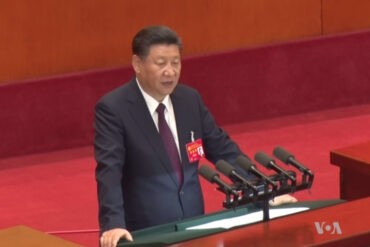The forked tongue of the Communist Party of India (Marxist) on the entry of women to the Sabarimala hill shrine has once again exposed the party’s age-old inability to resist the compulsions of communal politics wherein a religious faith becomes a political constituency. The party wants to take the high ground of ‘secularism’ but has been unable to live up to its public posturing because of the electoral dent it suffered in the Lok Sabha elections. And the only way out is to do both—play the communal card even while appearing to be principled.
And that is precisely why the CPI (M) speaks in multiple voices. Chief Minister Pinarayi Vijayan, who originally took a tough stand on Sabarimala and refused to give up even after his party’s electoral debacle, doesn’t appear to have completely backtracked while the Devaswom Minister Kadakampally Surendran is very clear that the government doesn’t want to support “activists” who want to enter the shrine.
Pinarayi Vijayan took legal counsel after the recent Supreme Court decision to refer the case to a seven-member bench while Surendran is categorical that the Government has no intention to allow women to enter the temple. Even as Vijayan appears unsure, the Home Ministry under him is firmly going ahead with the mission to stop menstruating women from entering the shrine.
One cannot blame the CPI (M) because its dilemma is real. And this is not new. Ever since the party formed (as undivided CPI) the first state government in 1957, what it has been preaching and practising haven’t been always the same. For example, the communal composition of the first ministry of EMS Namboodirippad was unmissable—one Kerala Brahmin, one Tamil Brahmin, two Nairs, two Ezhavas, two Syrian Christians, one Latin Catholic, one Muslim and one Scheduled Caste.
EMS, who originally wanted Muslims to enter politics and even mainstreamed the Muslim League by allying with it, became its bitter critic later and dubbed it communal when their party became a permanent ally of the Congress. The party’s attitude towards the Syrian Christians, the other major minority block, too has been the same. Sometimes it appeared tough, but from time to time, it would also try to appease the Church. Once, its national general secretary, Harkishen Singh Surjit even admitted that the party had failed to get the support of the Church in Kerala.
The same predicament in which posturing clashes with electoral expediency is what has led to its unprincipled stand on Sabarimala as well. Pinarayi Vijayan was certain about taking a proactive stand in September last year when the Supreme Court gave its verdict that women must indeed be allowed to enter the temple. He went out of his way to implement the order.
Probably both Vijayan and the party thought that their affirmation would attract minority votes. But in reality, the plan bombed big time. It not only didn’t bring the minority votes, but eroded its Hindu votes as well. The CPI (M) took a big risk because it was the party that predominantly Hindus voted for in Kerala. The washout in the Parliament elections in which the opposition candidates won with a majority of more than one lakh votes in ten constituencies proved it beyond doubt.
Although the party tried not to appear regretful, Kadakampally Surendran didn’t hide his view that Sabarimala indeed felled them. Not surprisingly, in the subsequent assembly by-polls, it did reasonably well and even recorded an impressive victory in the constituency where Sabarimala was the biggest political factor.
So, the party has learned its lesson and wouldn’t want to take any risks: the government would not only not come in support of women who want to enter the shrine, but it would also prevent them from going there. According to news TV reports, Sabarimala now looks like a fortress with a heavy presence of police. Last time, there were allegations that the government encouraged women to visit the temple and even facilitated their adventure leading to violent protests.
To be fair to the CPI (M), it doesn’t have a choice because of the state’s demography and its own affinity towards bourgeois democracy. Unlike most Indian states, Hindus constitute only 55 per cent of Kerala’s population with Muslims and Christians accounting for the rest. Bulk of the CPI (M)’s vote bank comes from the 55 per cent Hindu population because the Muslim and Christian political interests have been well-served in the Congress-led United Democratic Front (UDF).
The CPI (M) is worried about this precarious situation because it’s the same vote bank that the BJP is also drawing from. If the BJP raises its vote share in the state, it will mainly be at the cost of the CPI (M)’s share of the common pool and hence it is on a permanent quest to buttress it with the minority votes. Sabarimala was a calculated risk to attempt this yet again—to polarise the UDF’s minority vote bank—but it backfired.
The strategic failure of the CPI (M) in Sabarimala has been its own wrong reading that only hardcore Hindutva elements would be upset with its overzealousness in allowing women to enter the temple, although it was morally and constitutionally right. However, what it overlooked was the undercurrent of adverse sentiments among the “believers” who are not necessarily supporters of Hindutva politics. Most of them may not be the traditional voters of the BJP or antithetical to the CPI (M), but when it came to their faith, they registered their protest by voting against them.
Clearly, the CPI (M) has realised its folly and has gone back to its duplicitous position by appearing both principled and practical. Pinarayi Vijayan will represent the principle and Kadakampally Surendran, the practical while party members and proxies will speak in multiple voices. The assembly by-election was a pilot test and it has worked. It makes sense to scale it up now.







